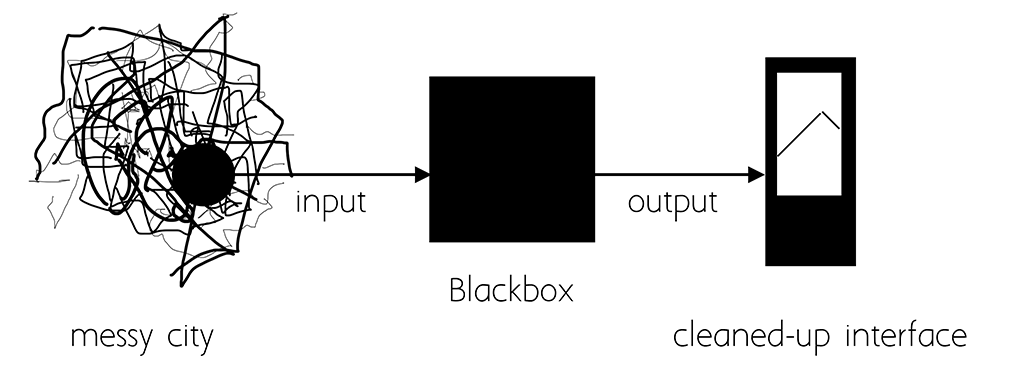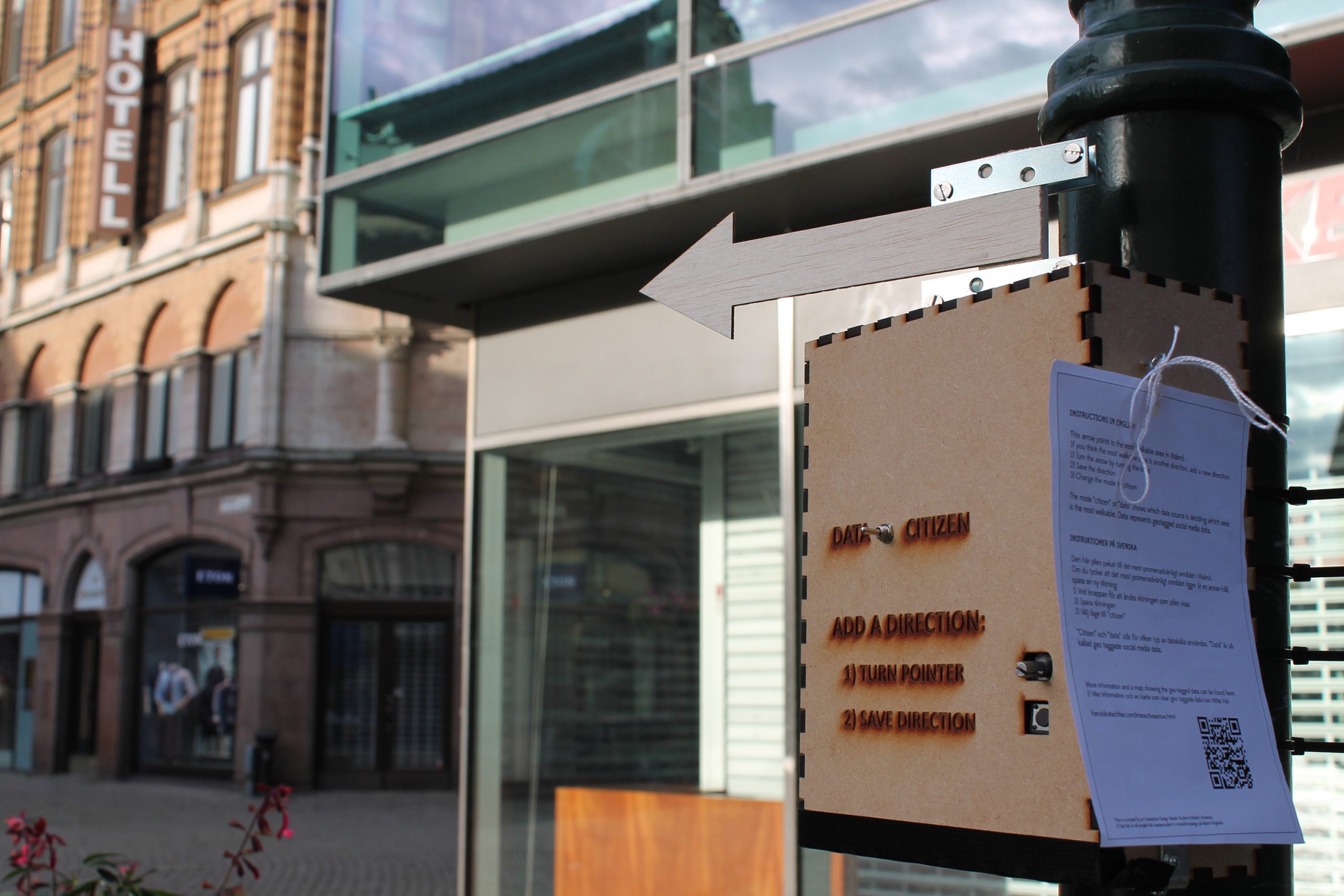Best Way To Go? Designing Public and Interactive Visualizations To Intrigue Citizens to Investigate What is Behind Smart City Algorithms
The topic of smart cities is growing in importance. However, a field study in the city of Malmö, Sweden shows that there is a discrepancy between the ongoing activities of urban planners and companies using analytical and digital tools to interpret humans’ behavior and preferences on the one hand and the visibility of these developments in public spaces on the other. Citizens are affected by the invisible data and software not only when they use an application, but also when their living space is transformed.
By Research through Design, this thesis examines ways of triggering discussions about smart city issues, which are hidden in software and code. In this thesis, a specific solution is developed: a public, tangible, and interactive visualization in the form of an interactive signpost. The final, partly functioning prototype is mountable in public places and points in the direction of the most beautiful walking path. The design refers to a smart city application that analyzes geo-tagged locative media and thereby predicts the beauty and security of a place. The aim is to trigger discussion about the contradictory issue of software interpreting the beauty of a place. Through its tangible, non-digital, and temporary character, the
interactive representation encourages passers-by to interact with the prototype.
The thesis project strengthened my ability to consider the social, political, and ethical issues of collecting and interpreting data and designing technological artifacts, which I aspire to apply when designing new technologies.
UX Research & Design Methods
- Semi-structured Interviews with The Connectors Society and Designers
- Co-Design Workshop With Interaction Designers
- Ideation
- Concept development and Exploration Through Storyboarding
- Wizard-of-Oz Prototyping
- User Testing
Software
- Arduino Hardware & Software
- Wordpress Website











